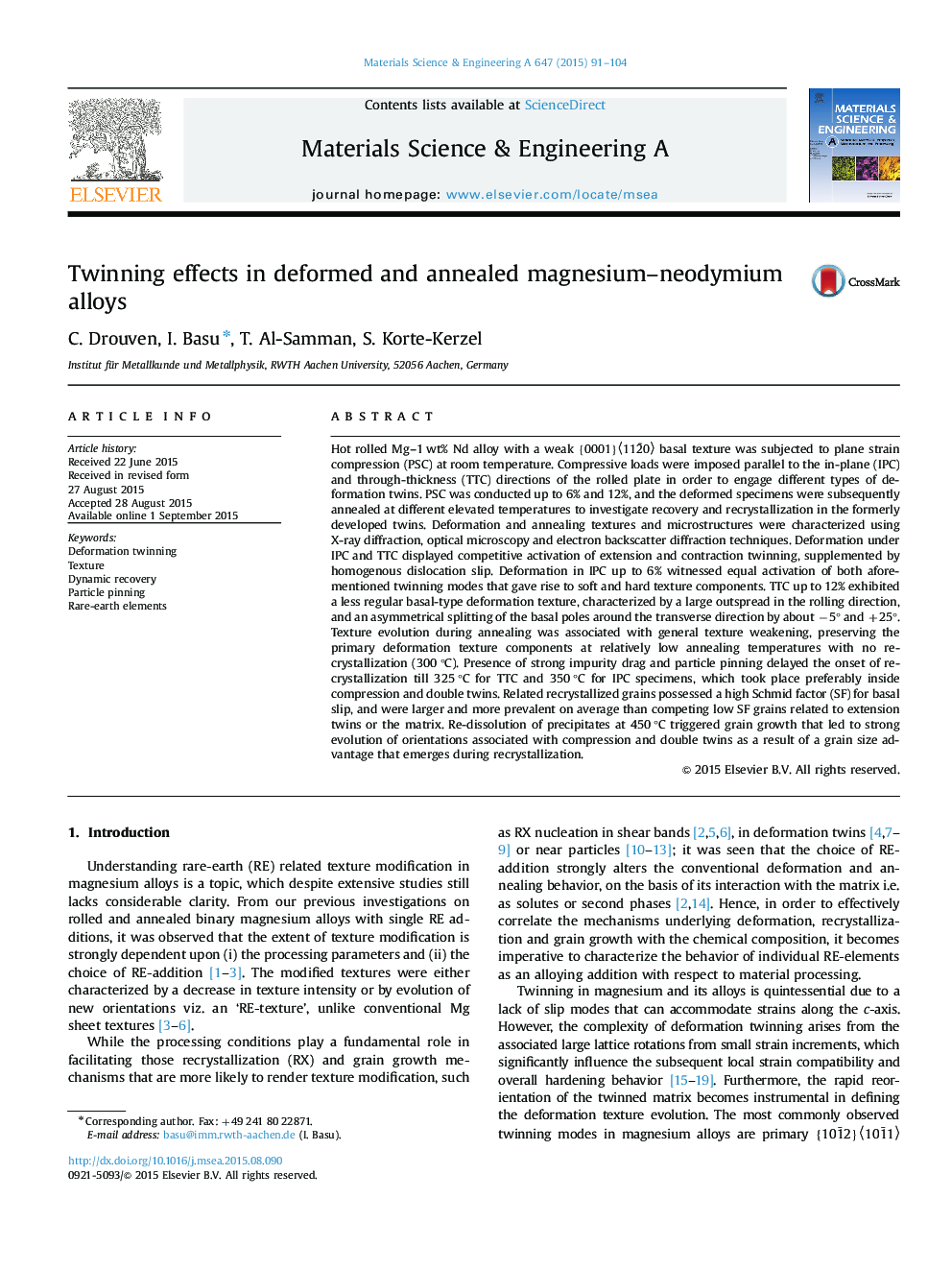| کد مقاله | کد نشریه | سال انتشار | مقاله انگلیسی | نسخه تمام متن |
|---|---|---|---|---|
| 1573958 | 1514696 | 2015 | 14 صفحه PDF | دانلود رایگان |
عنوان انگلیسی مقاله ISI
Twinning effects in deformed and annealed magnesium-neodymium alloys
ترجمه فارسی عنوان
اثرات دوختن در آلیاژهای منیزیم و نئودیموم تغییر شکل داده شده و ضد حرارت
دانلود مقاله + سفارش ترجمه
دانلود مقاله ISI انگلیسی
رایگان برای ایرانیان
کلمات کلیدی
تغییر دوطرفه بافت، بازیابی دینامیک، پیوند ذرات، عناصر نادر زمین
موضوعات مرتبط
مهندسی و علوم پایه
مهندسی مواد
دانش مواد (عمومی)
چکیده انگلیسی
Hot rolled Mg-1 wt% Nd alloy with a weak {0001}<112¯0> basal texture was subjected to plane strain compression (PSC) at room temperature. Compressive loads were imposed parallel to the in-plane (IPC) and through-thickness (TTC) directions of the rolled plate in order to engage different types of deformation twins. PSC was conducted up to 6% and 12%, and the deformed specimens were subsequently annealed at different elevated temperatures to investigate recovery and recrystallization in the formerly developed twins. Deformation and annealing textures and microstructures were characterized using X-ray diffraction, optical microscopy and electron backscatter diffraction techniques. Deformation under IPC and TTC displayed competitive activation of extension and contraction twinning, supplemented by homogenous dislocation slip. Deformation in IPC up to 6% witnessed equal activation of both aforementioned twinning modes that gave rise to soft and hard texture components. TTC up to 12% exhibited a less regular basal-type deformation texture, characterized by a large outspread in the rolling direction, and an asymmetrical splitting of the basal poles around the transverse direction by about â5° and +25°. Texture evolution during annealing was associated with general texture weakening, preserving the primary deformation texture components at relatively low annealing temperatures with no recrystallization (300 °C). Presence of strong impurity drag and particle pinning delayed the onset of recrystallization till 325 °C for TTC and 350 °C for IPC specimens, which took place preferably inside compression and double twins. Related recrystallized grains possessed a high Schmid factor (SF) for basal slip, and were larger and more prevalent on average than competing low SF grains related to extension twins or the matrix. Re-dissolution of precipitates at 450 °C triggered grain growth that led to strong evolution of orientations associated with compression and double twins as a result of a grain size advantage that emerges during recrystallization.
ناشر
Database: Elsevier - ScienceDirect (ساینس دایرکت)
Journal: Materials Science and Engineering: A - Volume 647, 28 October 2015, Pages 91-104
Journal: Materials Science and Engineering: A - Volume 647, 28 October 2015, Pages 91-104
نویسندگان
C. Drouven, I. Basu, T. Al-Samman, S. Korte-Kerzel,
